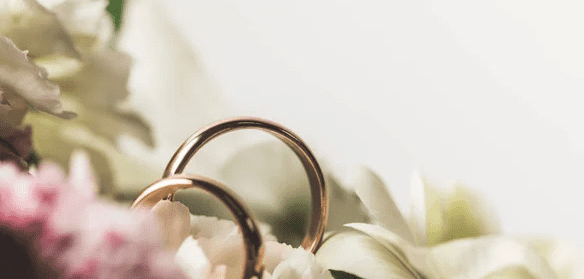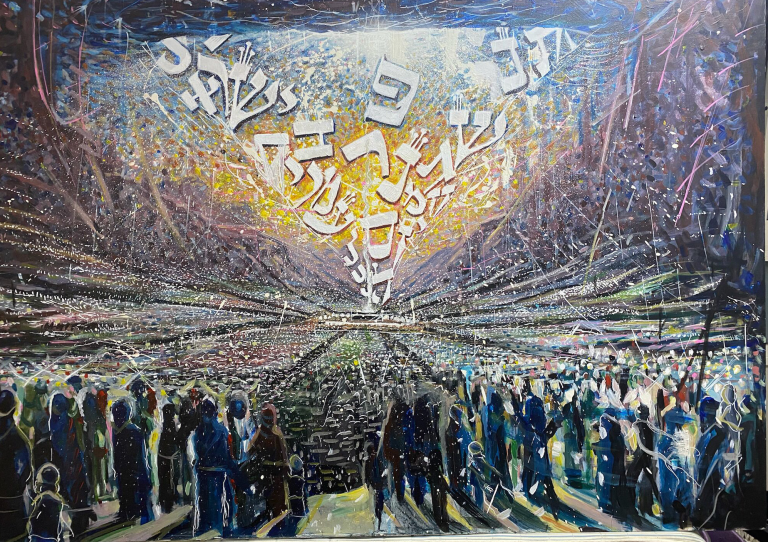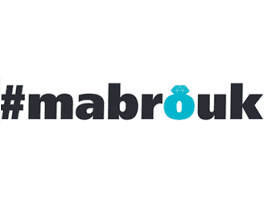“I treasure seeing a child build her skills, where there once weren’t any. I cherish helping parents ease their minds about their children, whether they are now able to eat safely and efficiently by mouth, or whether they now communicate their thoughts effectively.” ~~ Sophia
Meet Sophia Hazan, née Zalta, a young, dynamic, warm, and energetic role model for the women of our community.
Of Syrian descent on both sides, Sophia’s parents and grandparents are American. Her paternal grandfather helped many Syrian immigrants when they arrived in NYC, getting them housing and jobs, and even setting up mattresses for them in his barber shop.
Sophia calls herself a major tomboy. Growing up with three brothers, one older and two younger, she loved sports and was on her high school basketball team.
“My role was the ‘responsible child,’ as I was the only daughter,” Sophia said. “I have a close relationship with my brothers, who support my endeavors.”
School Days
Sophia attended Yeshiva of Flatbush for elementary and high school., She served on a number of committees and enthusiastically participated in extra-curricular activities.
“I enjoyed playing basketball for my high school team, engaging in dance competitions, being involved in the community with Sephardic Bikur Holim, joining the Tzedakah Commission, and the School Trip commission.”
Sophia was very outgoing, had lots of friends, loved to read books, and loved to learn. She was a diligent student.
During her sophomore year of high school, Sophia began to tutor younger children after school. She taught the subjects she excelled in, including Hebrew subjects, English, and social studies.
“I was a babysitter, tutor, homework helper, and a camp counselor. Although it was difficult to balance schoolwork, tutoring, and my social life, I was motivated to earn my own money.”
College and Marriage
Sophia first chose to attend Hunter College, with the goal of becoming a teacher. When her husband observed that she was more drawn to a one-on-one model, imparting knowledge and “seeing when a child gets it,” Sophia applied to Brooklyn College to study Speech Language Pathology. Anatomy and physiology were her favorite subjects. Brooklyn College had an excellent undergraduate speech program, which Hunter did not.
Sophia married her naseeb, David Hazan, at the end of her freshman year in college and settled in Brooklyn.
Sophia’s mindset was education oriented and her goals were to complete college and graduate school. Her parents were on the same page. Sophia bravely approached her in-laws to confirm that they would support her career choice when she and David married. She happily received their blessing.
David works in auto leasing sales. The couple have four children, one girl and three boys, ranging from two and a half to thirteen years old.
In her third year at Brooklyn College, Sophia took a semester off to give birth to her first son. She attended college three days a week and cherished her responsible nanny. Sophia completed her bachelor’s degree and headed straight to graduate school.
Sophia’s Core
Sophia describes herself as driven, committed, empathetic, independent, and diligent. After meeting Sophia, I would add warm and energetic and a lifelong learner.
Sophia shared that her parents and grandparents were wonderful role models and showed her the value of hard work. Her mom partnered with her father to contribute financially. The examples set by her parents and grandparents motivated Sophia to work while she was in high school to lessen the economic burden for her parents. She also enjoyed the freedom that came from earning her own money.
Modesty and humility were also values practiced by her parents and their parents. “We were taught to be grateful for what we had and always to live within our means.”
Sophia also acknowledges her excellent professional mentors. A female practitioner made a lasting impression during an externship. “She treated children and adults, and was confident, smart, decisive, and an excellent clinician.”
In order to grow as a clinician and to expand her client base Sophia searches for and hires experts in the pediatric feeding and swallowing disorders fields.
Family Life – Career Balance
Sophia always knew how to juggle, even in high school. It took her five years to complete her undergraduate degree and four years to finish her graduate program.
“After giving birth to my first child, it was difficult to leave him and return to school. I sought help for my anxiety and acquired the necessary tools to manage the lifestyle of a ‘working mom.’ I became present during my classes and could ‘switch hats,’ so to speak.”
Brooklyn College’s graduate program was extremely intense and competitive and had a reputation for “taking over one’s life.”
“It was a difficult four years. I gave birth to my daughter, Lauren, in my third year. Studying for my six-hour hour comprehensive exam and state exam while caring for an infant was so challenging. I kept my eye on the prize and was finally able to graduate.”
Sophia described how she excelled at managing her time, every minute of each day, including scheduling “me” time. She exercised before work and did lots of planning ahead. Opening her own practice was an adjustment, but Sophia’s being out of the home helped her children to grow. “They are becoming more independent, responsible, and caring for one another when Mommy isn’t home.”
David and the children are Sophia’s cheerleaders. “The time we spend together is quality time. My kids know I am present when I am with them: It’s quality versus quantity.
“Setting an example of working hard and achieving one’s goals is my top priority. Our kids love that Mommy helps children. They ask to come to the office and play with my toys. As they get older, they appreciate how much I juggle.”
Challenges and Accomplishments
One of Sophia’s biggest challenges is finding time to learn more about her specialty while working full time. It’s also the most exciting aspect of her work.
What is Sophia’s secret to success? “It’s approaching work with a mindset of growth and constant learning. Embracing challenges is the best way to grow professionally. I never shy away from a difficult case since they provide a learning opportunity.”
During the pandemic, Sophia decided to open her own practice rather than return to a school or agency setting. She realized she could contribute more to her patients this way.
Passions at Home and at Work
Sophia is passionate about seeing her children grow, succeed, and become independent. She and David are committed to modeling strong values for their children, such as respect, a strong work ethic, determination, and the ability to accept delayed gratification.
“I am so appreciative of my marriage to my amazing and supportive husband, my four beautiful children who make me so proud, my education, my private practice, and my independence.”
Career-wise, Sophia is ardent about helping babies and children of all ages to learn to speak and eat.
“I treat my patients using ‘evidence-based practice,’ interventions that are backed by the most current research. I am driven to continuously improve as a clinician. I read the most current literature and take specialized courses, learning from the most respected mentors.”
Sophia’s Specialties
Sophia has certifications in Clinical Competence in SLP and Teaching Students with Speech-Language Disabilities.
Her specialties are pediatric Speech and Language and Feeding and Swallowing Therapy. Sophia treats babies and children up to age twelve.
Sophia’s interest in Feeding and Swallowing Therapy was sparked in graduate school and from a friend who is a pediatric nutritionist. Sophia’s expertise includes working with -infants who have difficulty breast or bottle feeding, babies that need help transitioning to solid foods, weaning infants and children off feeding tubes, treating extreme picky eaters, children who have dysphagia (difficulty swallowing), children with physiological disorders or syndromes who experience feeding difficulties, and other physiological issues (such as gastrointestinal diseases, allergies, etc.).
“What inspires me about my career? I delight in working with my patients and their parents as a team, to reach their speech and feeding goals. I thrive on coaching and educating parents to support their child through the therapy process.
“I treasure seeing a child build her skills, where there once weren’t any. I cherish helping parents ease their minds about their children, whether they are now able to eat safely and efficiently by mouth, or whether they now communicate their thoughts effectively.
“The everyday skills of eating and speaking are often taken for granted. Seeing a child struggle with these vital skills is heartbreaking. When I can make even the slightest difference, I am overjoyed and grateful.”
Hakarat Hatov
Sophia is very connected to the community, and contributes her time and knowledge. She volunteered for SBH-SEARCH and conducted free speech and language/feeding evaluations to community children.
Sophia joined the SBH medical division and recently spoke at a meeting of the Celiac Disease Support Group.
“I adore motivating women to follow their dreams! I addressed students at my alma mater high school about being a working woman.”
Unwinding
Sophia enjoys strength training, running, hiking, playing basketball, attending dance class, a night out with friends or her husband, and a good meal. “Isn’t it apropos that I am a foodie?!” Sophia laughs.
Advice
Set goals and stay accountable! Find a spouse who will support your dreams. For working moms, manage and maximize your time, but also give yourself grace. That means ordering in dinner sometimes, taking a nap, or hiring extra help.
Connect with Sophia at Sophia@speechtosprout.com,
917-435-4325, or Instagram speech_to_sprout.
Ellen Geller Kamaras, CPA/MBA, is an International Coach Federation (ICF) Associate Certified Coach. Her coaching specialties include life, career, and dating coaching. Ellen is active in her community and is currently the Vice-President of Congregation Bnai Avraham in Brooklyn Heights She can be contacted at ellen@lifecoachellen.com (www.lifecoachellen.com).












